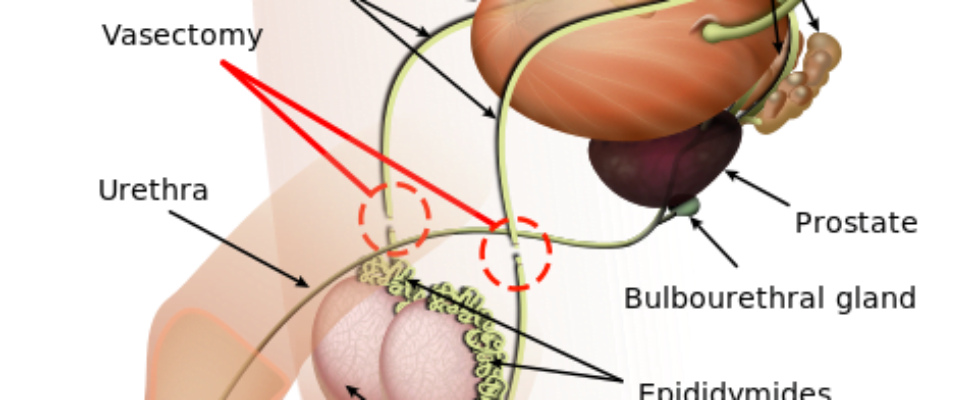VASECTOMY OPERATION IS THE MALE PERMANENT CONTRACEPTION

Vasectomy operation is the male permanent contraception. It is the male equivalent of bilateral tubal ligation. Vasectomy is also called male sterilization. Although, data has shown an increase in the uptake of vasectomy in the western world, it is yet to be widely accepted in Africa. In fact, I am yet to refer a case to the urologist for one. This is because, I have never succeeded in getting a couple to agree to vasectomy operation.
Even if the man agrees, the woman is often always the one to disagree. This is due to the concern of loss of sexual capacity which the women often express. Despite counseling, this singular concern is always the reason for not accepting vasectomy. These women will prefer to have a bilateral tubal ligation than allow their husbands to have vasectomy.
INDICATION FOR VASECTOMY OPERATION
The indication for vasectomy is when a couple have completed their family size and are in need of a permanent method of contraception. A man who do not want to father a child or who no longer want to have more children and want a permanent contraception is a candidate for vasectomy operation.
CONTRA-INDICATION TO VASECTOMY
A couple that do not accept vasectomy or are undecided will not have it performed on the man. Also, in the setting of emotional instability on the patient, vasectomy should be with hold. If the vas deferens cannot be felt or mobilize for the procedure, vasectomy may not be carry out. The condition that can cause challenge in feeling or mobilizing the vas deferens include; anatomic abnormalities like varicocele or hydrocele, if he had had a previous scrotal surgery or trauma that causes scaring in the scrotum.
In addition, the presence of an active local infection on the scrotum will hinder carrying out the procedure. This will prevent further spread of the infection. A patient on anticoagulant or antiplatelet medications (which are taken to thin the blood to prevent blood clot formation) can increase the risk of bleeding during the procedure or blood clot formation in the scrotum after the procedure. It is important to let your doctor know when you are on these medications.
WHAT TO EXPECT AT VASECTOMY OPERATION?
The procedure is usually done at an outpatient basis. It does not require general anaesthesia. It only requires local infiltration or spray of anaesthetic agent around the site of the procedure. This office procedure does not require hospital admission and has a quick recovery time. The man will be awake during the procedure but will not feel pain.
The vas deferens will be approached through a small opening in the midline. Then, by going through several layers of tissues. The vas deferens is identify and brought out through the small opening created by the use of other instrument other than cutting through. This is called the non-scalpel vasectomy. The vas deferens can be occluded by tying with an absorbable suture and cut, a clip can be applied or by the use of electrocautery.
COMPLICATION OF VASECTOMY
The complication of vasectomy includes
- Bleeding
- Infection
- Collection of blood clot in the scrotum
- Pain which could be immediate or persistent chronic pain. This usually follows a nerve injury during the operation.
- Atrophy of the testis can occur as a rare late complication when its blood supply is compromised during the operation.
- Formation of sperm granuloma which is a small painful nodule at the cut end of the vas deferens near the testis.
WHAT TO DO AFTER THE PROCEDURE
When at home after the procedure, the man should lie down, stay quiet for the remainder of the day, and avoid heavy lifting or exercise for a few days. Ice pack can be applied intermittently to help with pain and swelling. You should call your doctor when you observe any of the above complications.
It should be noted that the man still remains fertile and can impregnate a woman after the vasectomy procedure. To avoid this, additional contraception such as condom is required until sterility is confirmed. Normal sexual activity without additional contraception can begin after 20 ejaculations or two consecutive seminal fluid analysis results done four to six weeks apart shows no sperm in the test sample. It can take up to ten to twelve weeks to achieve sterility.
Some experts recommend only one semen analysis test after twelve weeks. If negative, sterility is confirmed and no need for further test.
FAILED VASECTOMY
Vasectomy is said to have failed if at the follow-up visit after 20 ejaculations motile sperm cells are found on the semen analysis test.

